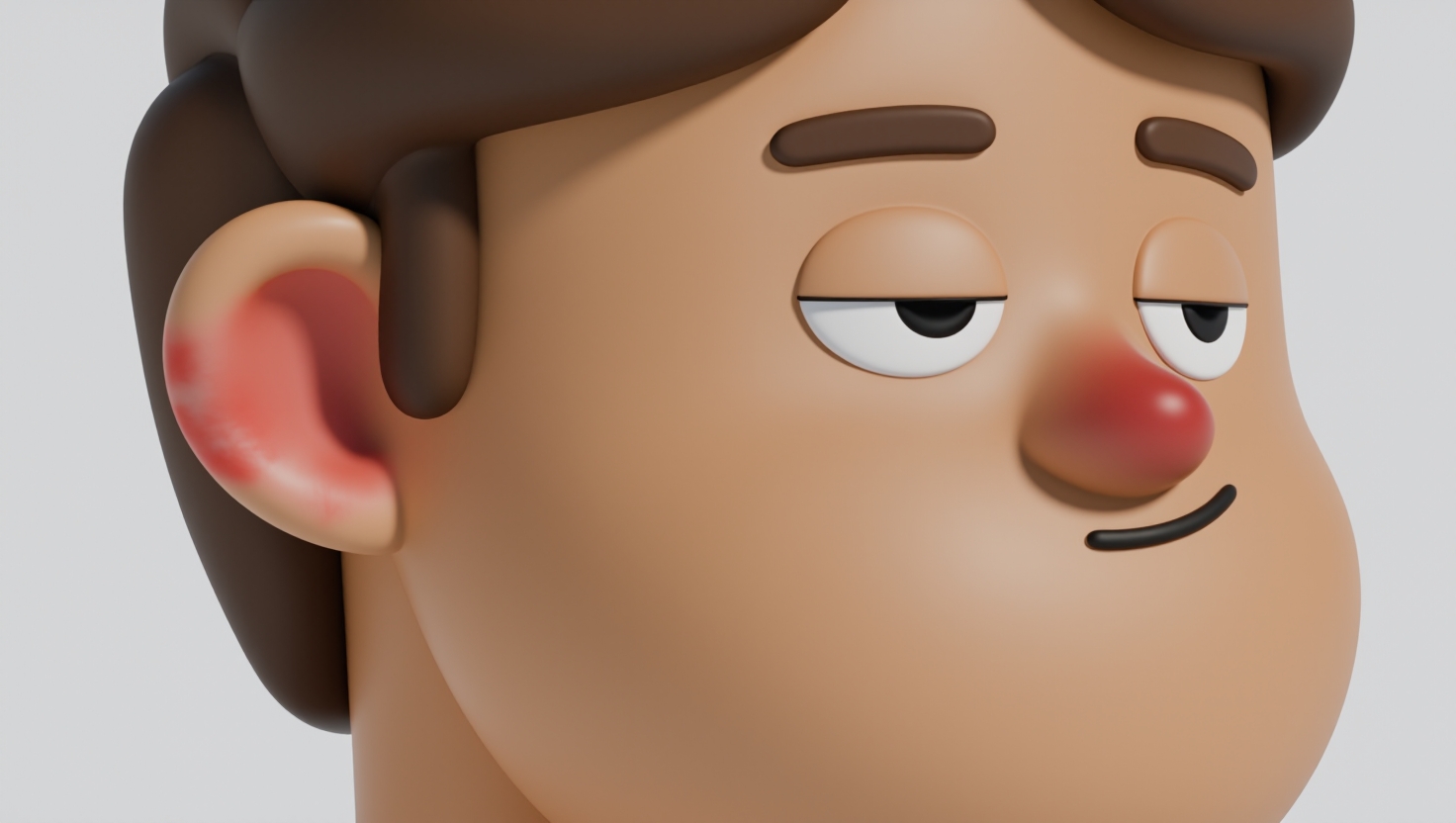What Is Bruising on the Skull Behind the Ear?
Bruising behind the ear refers to the appearance of discoloration or swelling in the area just behind the ear, often on the bony part of the skull known as the mastoid process. This happens when blood collects beneath the skin following an injury or irritation, causing visible marks, puffiness, or tenderness. Bruising in this particular spot can arise from a variety of common causes—some harmless, while others may require medical attention.
Understanding the possible reasons behind bruising in this area and knowing when to seek care can help you respond appropriately.
What Causes Bruising Behind the Ear?
Bruising behind the ear can develop due to several different reasons, including:
- Minor Trauma or Injury: Direct trauma is a common cause. Bumping the head against a low doorway, accidentally hitting oneself while styling hair, or a fall can break tiny blood vessels under the skin, leading to bruising. Even minor knocks can cause noticeable discoloration, especially if the skin in this area is thin and sensitive.
- Pressure or Friction: Continuous pressure or repeated rubbing can also cause bruising. Wearing tight headgear such as helmets, hats, or earphones that press firmly against the area behind the ear may contribute. Similarly, hearing aids that apply pressure to the mastoid region, or sleeping consistently on one side, can cause localized bruising or irritation due to inflammation and minor vessel damage.
- Medical Conditions: Certain health issues can increase the likelihood of bruising. Disorders that affect blood clotting—like hemophilia or thrombocytopenia—or vascular conditions that make blood vessels fragile can cause bruises to appear more easily and sometimes without obvious injury. Medications such as blood thinners (e.g., warfarin, aspirin) can also heighten bruising risk.
- Serious Causes: Although rare, bruising behind the ear can sometimes signal more serious underlying problems. For example, a skull fracture or head injury. In medical assessments, a bruise appearing behind the ear may indicate a fracture of the temporal bone. This sign is often accompanied by additional symptoms like bleeding from the ear, neurological changes, or severe headaches. After significant trauma, medical evaluation is recommended.
This information is for educational purposes only and is not a substitute for professional medical advice, diagnosis, or treatment.
When to See a Doctor
While many bruises behind the ear result from minor causes and improve on their own, certain warning signs should prompt medical attention promptly:
- Bruising appears without any known injury: Bruising behind the ear without recalled trauma could indicate an underlying health problem requiring evaluation.
- Severe pain or swelling develops: Increasing discomfort, pronounced swelling, or sensitivity beyond mild tenderness may suggest deeper tissue injury or infection.
- Hearing changes, ringing, or dizziness occur: These symptoms could be signs of involvement of the ear or nerves associated with more serious trauma.
- The bruise does not improve or worsens over several days: Bruises typically begin fading after a few days; if the discoloration intensifies, enlarges, or new symptoms arise, consult a healthcare professional.
- Other symptoms like headache, nausea, confusion, or weakness arise: These could be signs of a concussion or intracranial injury needing immediate assessment.
Prompt evaluation enables clinicians to rule out serious problems and start appropriate treatment if necessary. When in doubt, it is advisable to consult a healthcare provider.
How Bruising Behind the Ear Affects Daily Life
Even when bruising behind the ear is not medically serious, it can still affect everyday activities and comfort. Here are some ways it may impact daily life:
- Discomfort or tenderness: The area behind the ear is sensitive, and bruising can cause soreness that makes some head movements painful. For example, turning the head quickly or resting the head against a pillow may become uncomfortable.
- Self-consciousness: A visible bruise, especially on the head or face, can draw attention and lead to feelings of self-consciousness or embarrassment, particularly in social or professional settings.
- Limitations on physical activities or equipment use: If wearing helmets, headphones, hearing aids, or other headgear, bruising and tenderness can complicate wearing these devices comfortably. Likewise, participating in sports or work that puts pressure on the bruised area might need to be temporarily avoided to allow healing.
In many cases, these effects are short-lived. Proper care—such as applying cold compresses initially and protecting the area—can help reduce discomfort and support recovery.
What Does the Research Say?
Bruising behind the ear is not exceedingly common, but it is recognized as a significant clinical sign in trauma evaluations. Bruising around the mastoid process is an important indicator of basal skull fractures in some cases. Recognizing this sign can be critical because these fractures sometimes involve damage to critical structures like the brain and cranial nerves.
Most bruises in this region result from minor bumps or sustained pressure from everyday activities, without associated complications. This highlights the importance of understanding the context and related symptoms alongside the bruise itself.
An example includes bruising behind the ear after wearing tight headgear all day, which can resolve within a week without treatment, demonstrating how common and benign such occurrences can be.
Final Reminders
This article is intended for educational purposes only and should not replace professional medical advice, diagnosis, or treatment. If bruising behind the ear occurs—especially with associated symptoms or without a clear cause—consult a qualified healthcare provider promptly.
---
Ready to breathe easier and take care of your health? Schedule your visit at Sleep and Sinus Centers today—either online or by calling (678) 689-1100. Our experts are here to help you with comprehensive care tailored to your needs.
Don’t let allergies slow you down. Schedule a comprehensive ENT and allergy evaluation at Sleep and Sinus Centers of Georgia. We’re here to find your triggers and guide you toward lasting relief.



